Introduction
Tucked between two of Seoul’s grandest palaces lies a place where time seems to pause. Bukchon Hanok Village is a picturesque neighborhood of narrow lanes and traditional wooden homes that date back hundreds of years. Set against the backdrop of South Korea’s bustling capital, this historic area offers visitors a serene window into the country’s aristocratic past.
More than just a tourist destination, Bukchon is a living neighborhood. Locals still reside in these traditional Korean houses, known as hanoks, creating a rare blend of the old and the new. Whether you’re fascinated by architecture, eager to explore local culture, or simply want to take a beautiful walk through history, Bukchon welcomes you with quiet charm and deep stories.
A Walk Through History: The Origins of Bukchon
Bukchon’s history stretches back to the Joseon Dynasty, a period that spanned over five centuries starting in the late 14th century. Back then, the village was carefully planned as a residential district for the elite—royal family members, high officials, and scholars. Its location, nestled between Gyeongbokgung Palace, Changdeokgung Palace, and Jongmyo Shrine, made it an ideal home for those close to the royal court.
Throughout the years, while many other areas of Seoul modernized rapidly, Bukchon managed to preserve its traditional layout and architecture. Some homes were damaged during conflicts like the Korean War, but strong community efforts and preservation programs helped rebuild and maintain the character of the village.
Today, Bukchon is recognized not only for its historic value but also for its ability to offer a glimpse into the daily life of Korea’s nobility in times gone by.
The Beauty of Hanok Architecture
Bukchon’s signature is its unique architecture. Hanoks, the traditional homes found throughout the village, are designed with incredible sensitivity to nature, harmony, and functionality.
Distinct Features of Hanoks:
-
Curved tile roofs (giwa):
-
Designed to handle Korea’s weather and provide aesthetic flow.
-
Ondol heating systems:
-
An ancient form of underfloor heating, still admired for its efficiency and comfort.
-
Natural materials:
-
Built with stone, clay, and wood to create breathable, eco-friendly homes.
-
Open courtyards:
-
These interior spaces allow light and air to flow freely while providing privacy.
-
Maru verandas:
-
Elevated platforms are ideal for sitting, socializing, or escaping summer heat.
Each hanok reflects Confucian principles, with spaces arranged to promote respect, order, and balance. Wealthier homes in Bukchon were often more elaborate, with spacious rooms and detailed wooden carvings, while modest hanoks followed simpler blueprints.
Visitors can learn more about hanok design by visiting various museums and cultural centers within the village, many of which explain how these homes were built and used.
Top Things to Do in Bukchon Hanok Village
Whether you want to explore the area slowly or dive deep into Korean traditions, Bukchon offers a range of experiences.
Roam the Winding Streets
Walking through Bukchon feels like stepping into a storybook. Its alleys twist and turn, climbing gentle hills and offering scenic views of tiled rooftops. The paths are especially photogenic, particularly at popular spots like Bukchon-ro 11-gil. The contrast between old hanoks and modern skyscrapers in the distance creates stunning visuals.
Cultural Activities to Try
-
Wear a hanbok:
-
You can rent a traditional Korean outfit and explore the village dressed like royalty. Many hanbok rental shops are located nearby.
-
Tea ceremonies:
-
Enjoy a quiet afternoon in a hanok teahouse sipping herbal infusions, paired with local snacks.
-
Craft workshops:
-
Learn Korean calligraphy, make paper fans, or try your hand at folk painting and knot tying. These hands-on activities are great for all ages.
-
Cultural performances:
-
Seasonal events and demonstrations are sometimes held at the Bukchon Traditional Culture Center.
Visit Museums and Historic Homes
-
Baek In-je House:
-
A beautifully restored hanok that allows you to step inside a traditional upper-class home.
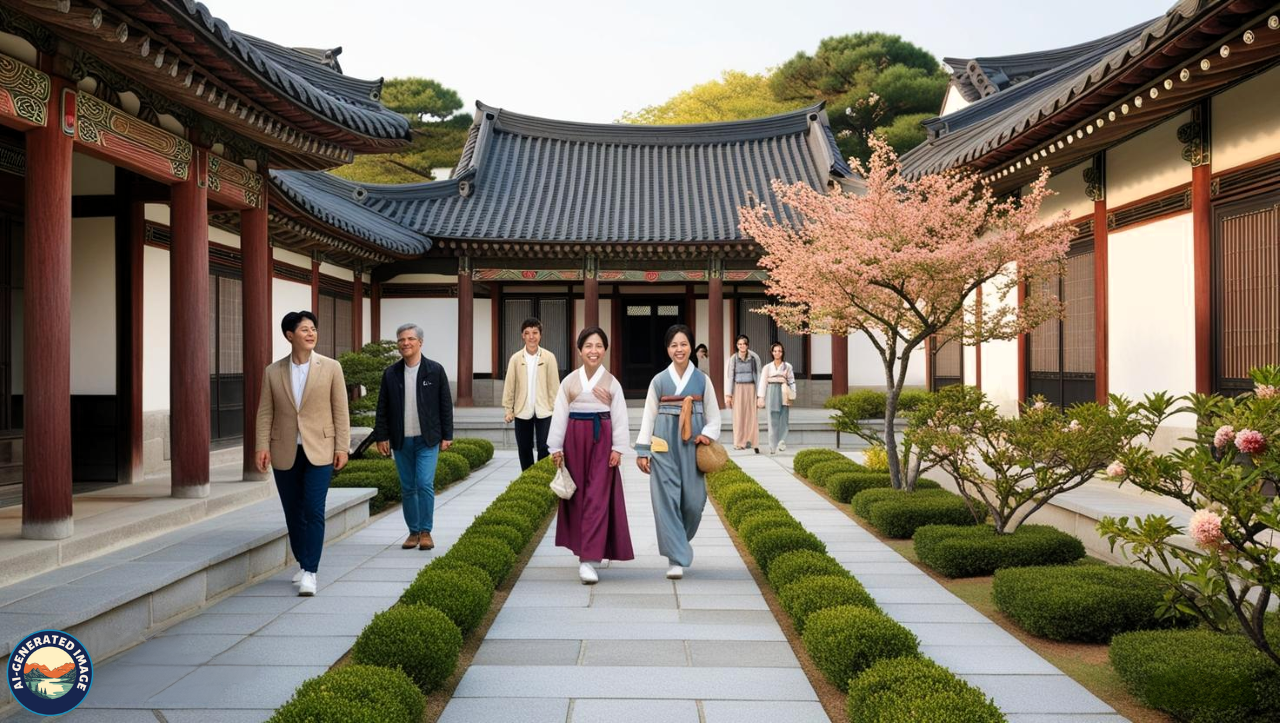
-
Gahoe Museum:
-
Focuses on Korean folk beliefs, shamanism, and protective charms.
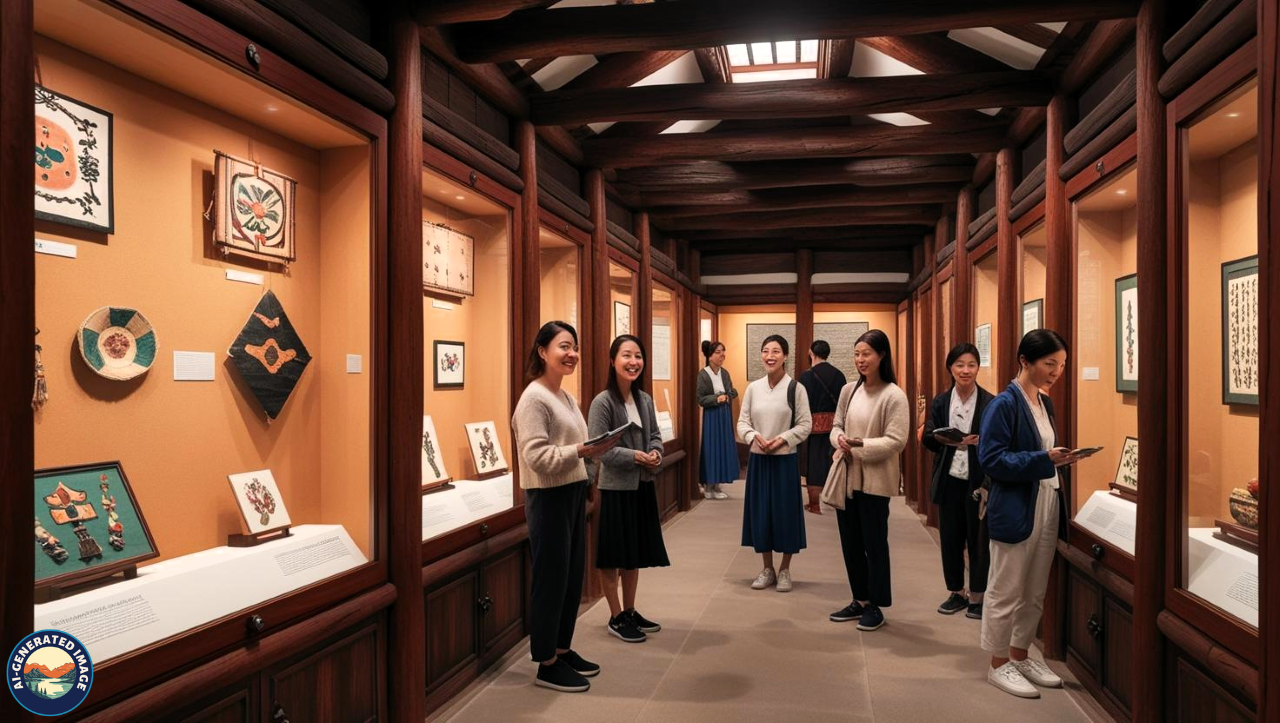
-
Bukchon Cultural Center:
-
A great first stop, offering maps, guides, and cultural information.
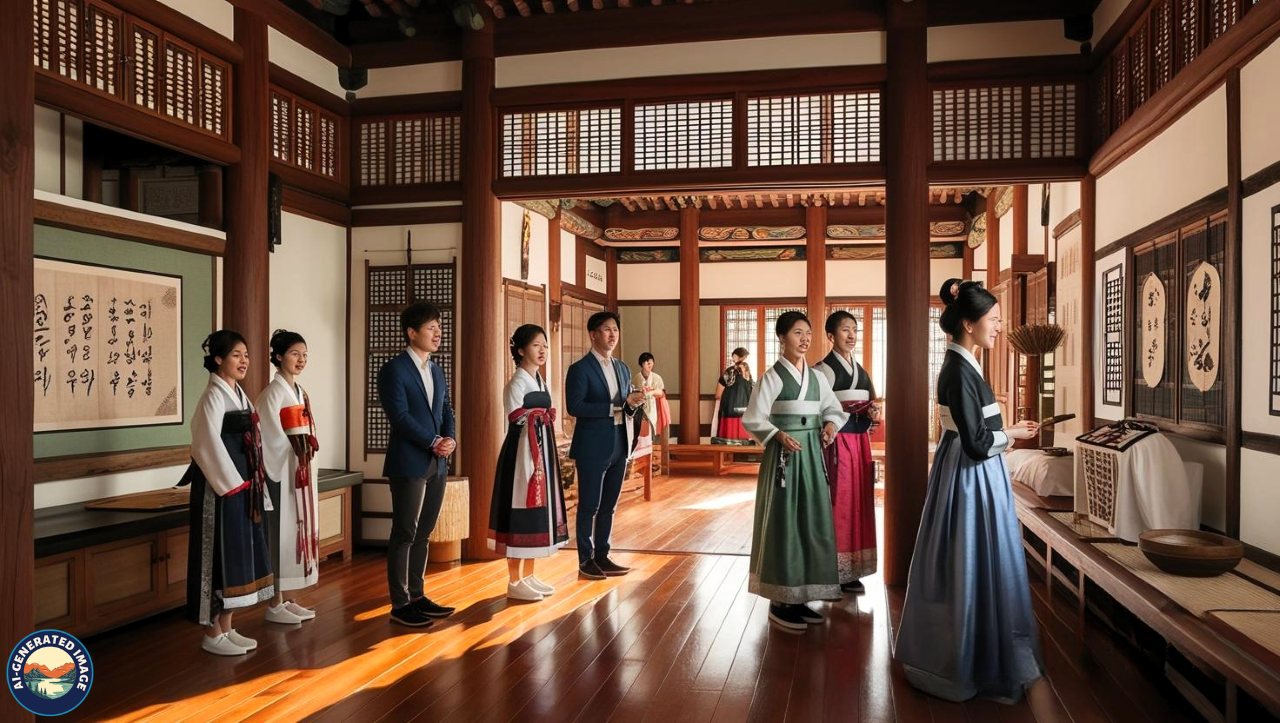
Discover Nearby Attractions
Bukchon is surrounded by some of Seoul’s most famous landmarks:
-
Gyeongbokgung Palace:
-
The main royal palace of the Joseon Dynasty.
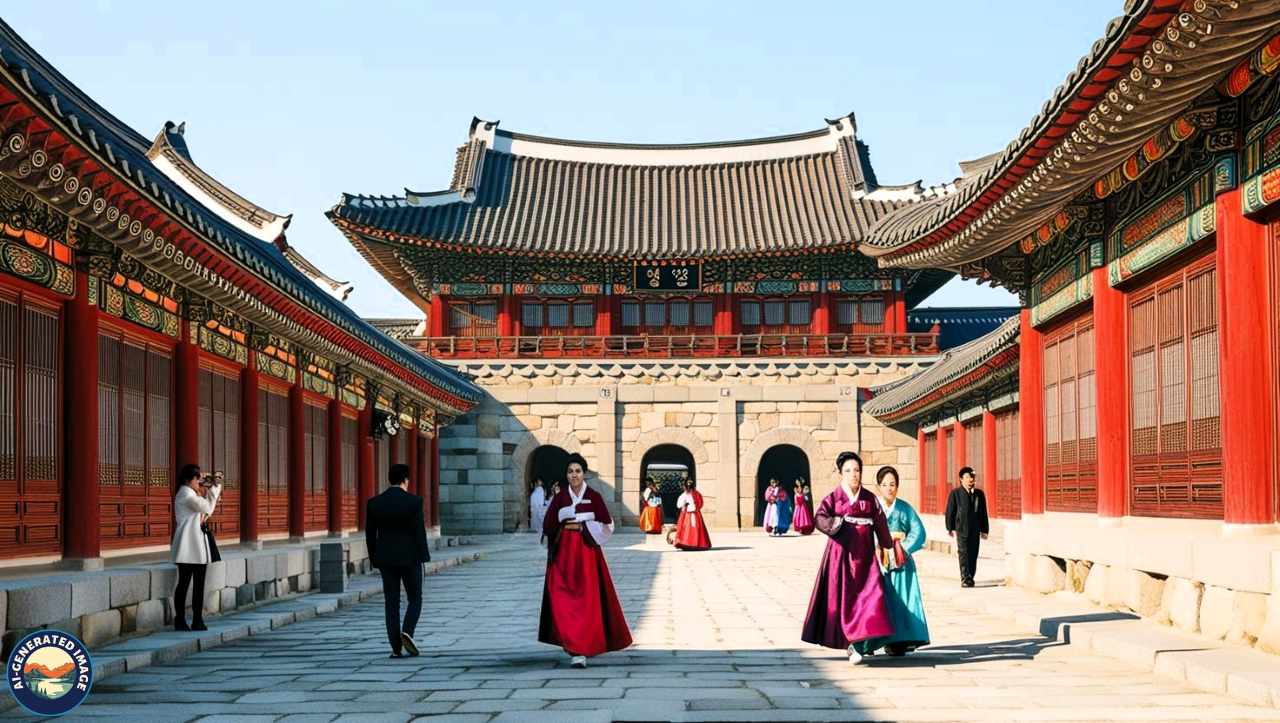
-
Changdeokgung Palace and Secret Garden:
-
Known for its natural beauty and UNESCO World Heritage status.
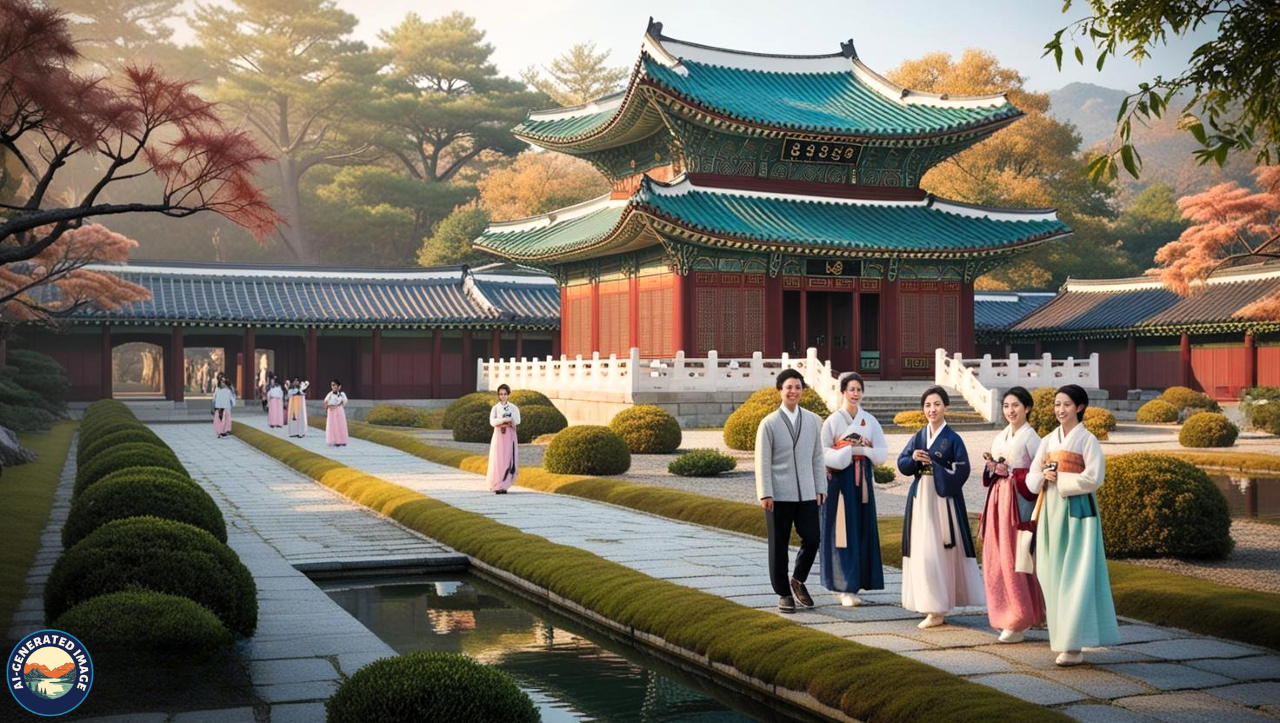
-
Jogyesa Temple:
-
A peaceful Buddhist temple adorned with colorful lanterns.
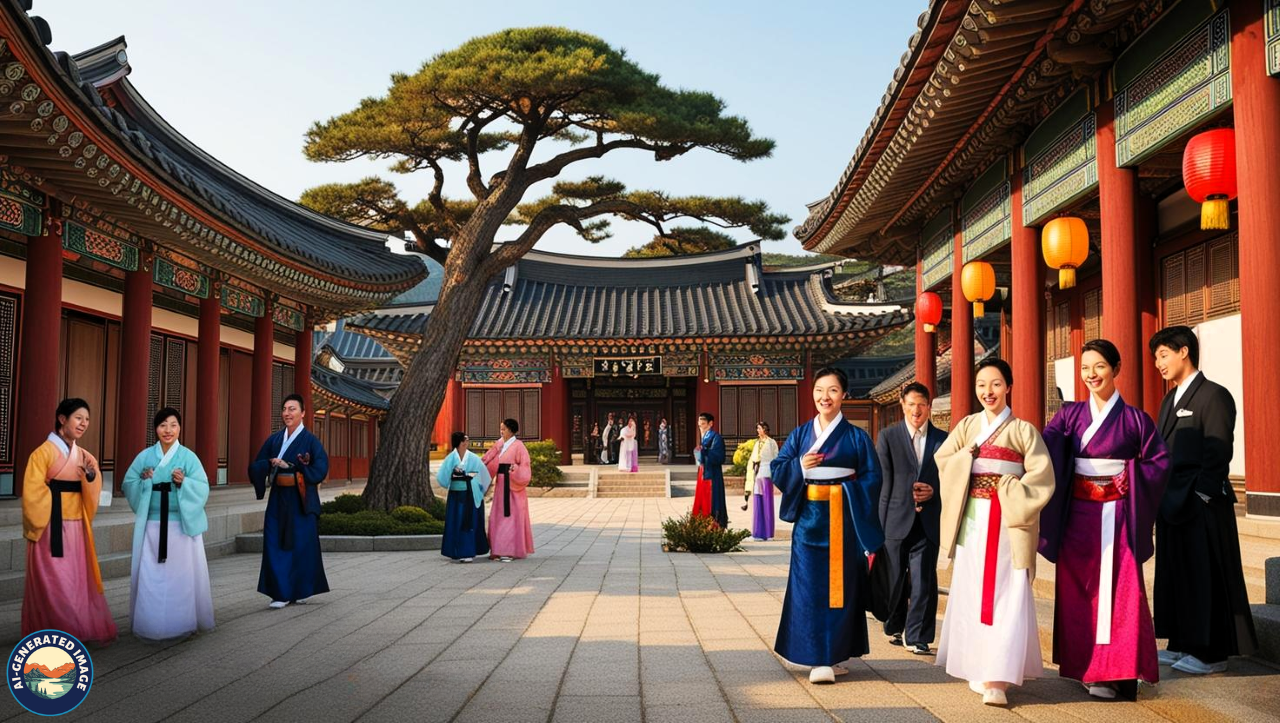
A Living Village: Balancing Tradition and Modern Life
One of the most intriguing things about Bukchon is that it’s not just a preserved site—it’s a living neighborhood. Families continue to live in these hanoks, adapting them to modern needs while preserving their original structures.
As you explore, you’ll notice small cafes, galleries, and boutique stores nestled within hanoks. Some of these homes have been converted into guesthouses, allowing travelers to spend a night in a traditional setting. Others are art spaces or design studios, blending Korea’s artistic spirit with its architectural heritage.
This balance between the old and the new gives Bukchon its unique identity. It’s not about freezing history in place—it’s about keeping tradition alive through daily life.
Best Time to Explore Bukchon
Bukchon is open to visitors all year round, but each season brings a different flavor to the experience:
Spring (March to May):
The village comes alive with cherry blossoms and spring blooms. Temperatures are pleasant, and the air is fresh.
Summer (June to August):
Everything is lush and green, though it can be hot and humid. It’s a good time for indoor workshops or shaded teahouse visits.
Autumn (September to November):
Crisp air and fiery fall foliage make this a favorite season for many. The hanoks framed by red and orange leaves create a magical setting.
Winter (December to February):
Snowfall transforms the village into a peaceful wonderland. The rooftops covered in white are especially beautiful.
Getting There
Reaching Bukchon is simple thanks to Seoul’s efficient transit system:
-
Subway:
-
Take Line 3 to Anguk Station and exit via Exit 2. From there, it’s a short walk to the village.
-
By Foot:
-
If you’re in Insadong or Samcheong-dong, Bukchon is just a few minutes away on foot.
-
By Bus or Taxi:
-
Local buses or taxis can also drop you off nearby, especially if you’re coming from other parts of the city.
Pro tip:
Grab a map at the Bukchon Culture Center. It highlights recommended walking routes and key photo spots.
Visitor Tips
To have the best experience in Bukchon, consider these practical tips:
-
Wear comfortable shoes:
-
You’ll be walking up and down hills on stone-paved paths.
-
Respect the locals:
-
Keep your voice down, don’t peek through windows, and follow posted signs.
-
Avoid peak hours:
-
Early mornings or late afternoons are quieter and cooler.
-
Stay hydrated:
-
Especially during the summer months.
-
Eat nearby:
-
Bukchon itself is more residential, but nearby Insadong and Samcheong-dong offer lots of tasty eats—from Korean BBQ to fusion snacks.
Conclusion: Step Back in Time Without Leaving the City
Bukchon Hanok Village is not just about seeing the past—it’s about feeling it. Every tile, every wooden beam, every winding alley whispers stories from centuries ago. Yet, what makes Bukchon truly special is how seamlessly it fits into the present.
As Seoul races into the future with its K-pop, skyscrapers, and cutting-edge technology, Bukchon reminds us that heritage is just as important as progress. A walk through this quiet neighborhood isn’t just sightseeing—it’s a cultural experience that touches the soul.
If you’re looking to explore Korea beyond the usual attractions, Bukchon is a must. It’s a peaceful, beautiful, and deeply meaningful journey into Korea’s rich heritage.
FAQs
Do I need a ticket to enter Bukchon Hanok Village?
No, entry is free. You can walk around and explore the village without any cost. However, some cultural programs and museums may charge a small fee.
Are all the hanoks open to the public?
Not all. Many hanoks are private homes. Some are open as guesthouses, cafes, or museums where visitors are welcome.
When is the best time to visit during the day?
Morning (around 9–11 AM) and late afternoon (4–6 PM) offer soft lighting and fewer crowds, perfect for photos and peaceful exploration.
Can I book a stay in one of the hanoks?
Yes, several hanoks in the area operate as traditional guesthouses. Staying overnight offers a unique and immersive cultural experience.
Is Bukchon suitable for kids and seniors?
Yes, but be mindful that the area has hilly terrain and cobbled paths. Comfortable footwear is a must.
Are English tours available?
Absolutely. Guided walking tours in English (and other languages) are available and can be booked online or through cultural centers.
How long does it take to explore the village?
Two to three hours is sufficient for a relaxed stroll. If you plan to attend workshops or visit nearby palaces, set aside half a day.

